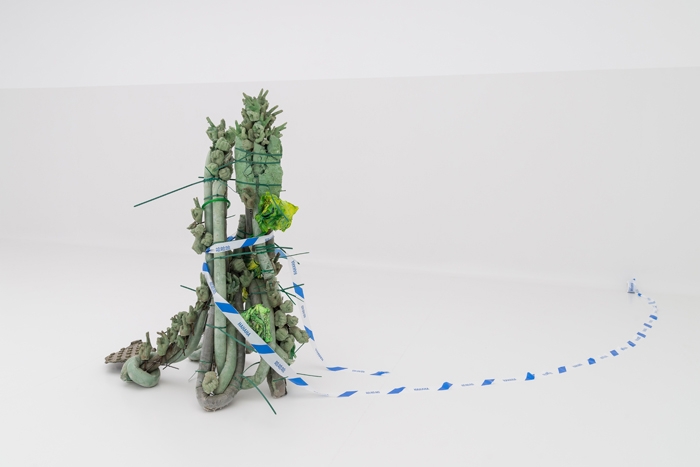Following from Part I of ArtReview Asia’s winter previews…
In Production: Art and the Studio System at Yuz Museum, Shanghai, through 1 March
Speaking of the other side of the world, over at the Yuz Museum you’ll have a chance to see the first fruits of the private museum’s much-hyped, but slightly mysterious collaboration with Los Angeles County Museum of Art (LACMA). (Donald Trump might not approve, but Sino-American collaboration remains all the rage in the world of art despite any punitive tariffs.) In Production: Art and the Studio System is a group exhibition that draws largely on LACMA’s collection to investigate the intertwined histories of the visual arts and film. You’ll have guessed from the title that the point of crossing is configured around the film industry’s (for which read Hollywood’s) studio system (and its decline) and the various incarnations of the artist’s garret-cum-studio (through to contemporary ideas of networked and decentralised production). The focus, naturally, is on artists based in Southern California, among them Vienna-exile Mathias Poledna, who moved to the region in order to investigate the manufactured dreams and exploit the industries (animators, propmakers, etc) connected with that manufacturing, as his three-minute Disneyesque animation Imitation of Life (2013, on show here) demonstrates. What else will be on view is anyone’s guess at this stage; precise details remain shrouded in secrecy.

Eddie Martinez at Yuz Project Space of Art, Shanghai, through 12 January
No such qualms surround Open Feast, a selection of new paintings and drawings by Eddie Martinez on show at the Yuz’s clumsily titled Project Space of Art (no doubt the Chinese name sounds better). Martinez’s colourful neo-expressionist paintings often deploy unconventional materials such as gum and baby wipes, and appear to riff off now-conventional-but-at-the-time-unconventional artists from the past such as Karel Appel, Asger Jorn or Jean Dubuffet. The notion that this might be a kind of art-history remix is further enhanced by the fact that there’s a touch of street art there too, in the chunky shapes, blocky outlines and use of spraypaint. Although with Banksys selling for millions now, perhaps that’s pretty conventional too.
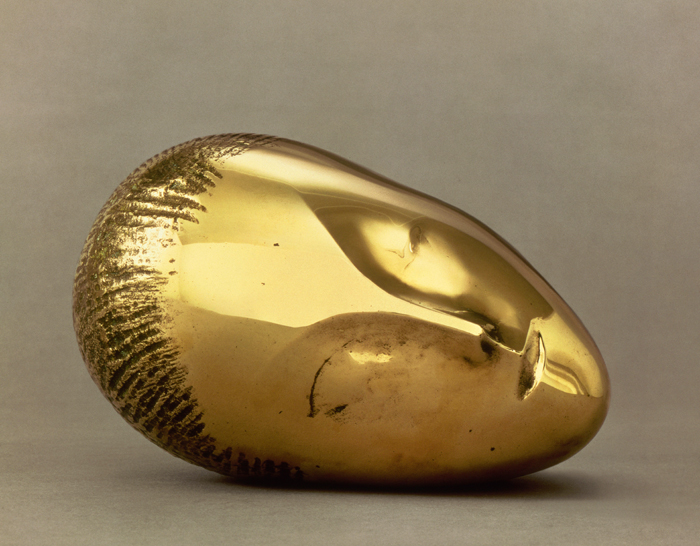
The Shape of Things at Centre Pompidou × West Bund Museum Project, West Bund Art Museum, Shanghai, through May 2021
The no-less-mysterious collaborative venture Centre Pompidou × West Bund Museum Project, located in the David Chipperfield-designed West Bund Art Museum, is also due to open this November, with a show titled The Shape of Things, featuring 100 works from the Pompidou’s collection, curated by the Paris-based institution’s chief curator of new media, Marcella Lista. How, exactly, that is going to shape up is still a secret at the time of writing.
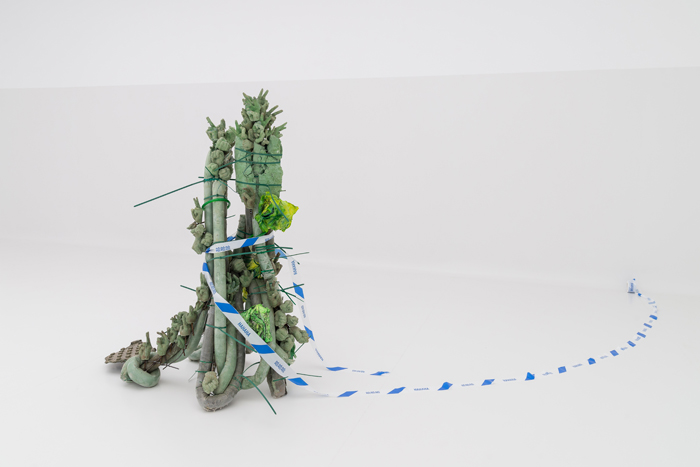
Advent: Inventing Landscape, Producing the Earth at Qianshao Contemporary Art Center, Shanghai , through 31 March
So let’s get real. The Qianshao Contemporary Art Center, located in an agricultural environment on Chongming Island in the Yangtze River estuary in otherwise resolutely urban Shanghai, is one of the newer additions to the city’s art scene. The group exhibition Advent: Inventing Landscape, Producing the Earth, curated by Xu Zhen and featuring more than 40 works by 32 Chinese and international artists, is its first contemporary art show. Work by the Lawrences Lek and Weiner, Martin Creed, Michael Dean and Amalia Pica rub alongside contributions from Guan Xiao, He An, Ding Li and Zhao Yao in an exhibition that seeks to confront the futures of the rural and the urban, and the impacts of globalisation.
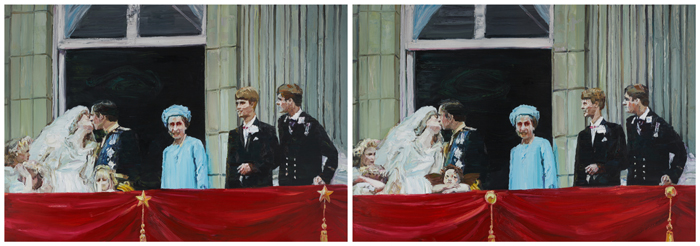
Li Qing at Prada Rong Zhai, Shanghai, through 19 January
Over at Prada Rong Zhai, Hangzhou-based Li Qing’s Rear Windows, inspired by the Alfred Hitchcock movie, looks back on the history of the Shanghai residential building built by the entrepreneur Rong Zongjing in 1918 and restored by the fashion house in 2017. Li, many of whose works have deployed window frames in place of canvases, describes his approach to painting as being comparable to a computer programmer: he scripts games and challenges to which his audience responds. His ongoing Finding Differences series of diptychs (recent examples of which are on show here) invites audiences to look at real and invented memory in a twist on the traditional ‘spot the difference’ quiz format. One half of the diptych Wedding (There Are Six Differences in the Two Paintings) (2006), for example, presents a famous image of Charles and Diana on the balcony of Buckingham Palace following their wedding, accompanied by their adult children William and Harry, a putto borrowed from a Raphael painting and distinctly People’s Republic-style stars on the red-velvet balcony drapes. A similar mix of games and ghosts is promised at Rong Zhai, where the exhibition, conceived as a scripted experience, includes works that directly respond to the building’s history (carpets printed with the tile patterns of the building’s original ballroom floor), new commissions and some of Li’s greatest hits.
Yu Honglei at Antenna Space, Shanghai, through 2 January
It’s seven large sculptures (approximately two metres high) that will dominate Beijing-based Yu Honglei’s exhibition at Shanghai’s Antenna Space. Yu trained as an animator, but works across a variety of media, deriving inspiration from both his own experiences and the internet (yes, he’s been described as post–). His new sculptures, vaguely anthropomorphic, emergent forms, will be accompanied by his first series of small-scale figurative paintings (rest assured, the influence of pixels is present).
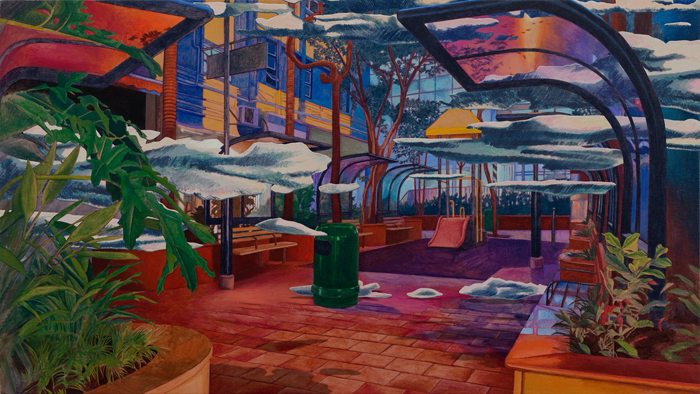
Gao Yuan at Capsule Shanghai, through 25 December
Another Beijing-based artist, Gao Yuan, who also trained in animation, is actually showing a new animation, titled Cloud of the Unknown (2019), as well as a series of paintings used as backgrounds to the film, at Capsule Shanghai. Often richly colourful and drawing inspiration from the history of painting and Studio Ghibli-esque anime, Gao’s animations are richly symbolic and often explore the uncertain states of being and consciousness. (Rumi would like that.)

Fang Di at Vanguard Gallery, Shanghai, through 6 January
Talking of uncertain states, for the past three years Chinese artist Fang Di has been working in Port Moresby, the capital of Papua New Guinea, a nation whose infrastructure is being developed by Chinese construction companies as part of the Belt and Road Initiative, which spans more than 70 countries worldwide. The artist’s first exhibition at Shanghai’s Vanguard Gallery, titled The Golden Bowl (the name of a ‘flying saucer’-shaped Chinese restaurant in Port Moresby, located opposite the chancellery in the ministerial district), will explore the country’s past and present and how it is affected by migrant and economic change. The film Minister (2019) looks at the story of how Australian immigrant Alexandre Tkatchenko became its first white government minister, while another film, The Magical of Pipes (2019), explores the role of pipes in the heritage and culture of the Bougainville people and the Malaita people in the Solomon Islands.
Biennale Jogja XV, various venues,Yogyakarta, through 30 November
‘Periphery’ is the subject of the 15th Biennale Jogja, which for the past five editions, including this year’s, has been focused on equator regions, primarily as they touch the Southeast Asian or ASEAN regions. Curated by Jogja-based artist Akiq Abdul Wahid (who is best known for works involving photography and as a member of the collective MES 56) and curator Arham Rahman, and Bangkok-based curator Penwadee Nophaket Manont, Biennale Jogja XV is titled Do We Live in the Same playground? (the capitalisation is unexplained, but you’ll be used to the unexplained or mysterious by now). More importantly, the periphery here is not only explored in relation to geography and geopolitics, but also in respect to subjecthood and identity. It includes 52 artists and groups from across the region, among them Muslimah Collective and the excellent Sutthirat Supaparinya from Thailand, Nguyen Trinh Thi from Vietnam and, best of all, Vandy Rattana from Cambodia. Not that ArtReview Asia has favourites: fools and wise people and all that. Oh, and, errr… critical distance or something.

Shaping Geographies: Art / Woman / Southeast Asia at Gajah Gallery, Singapore, through 31 December
All of which leads a lot less seamlessly than ArtReview Asia (or Rumi, for that matter) would have liked to Shaping Geographies: Art/ Woman / Southeast Asia, an 11-woman show at Singapore’s Gajah Gallery. Hanoi-based Nguyen Trinh Thi is among them and will be showing the video Eleven Men (2016), which comprises found footage drawn from Vietnamese cinema. Alongside that, Tintin Wulia offers the two-channel video projection Dos Cachuchas (2018), which examines a dance first popularised during the 1830s by the Austrian ballerina Fanny Elssler, who had ‘translated’ it from an ‘exotic’ Spanish dance of supposedly Cuban origin. The dance was reconstructed by a dance-notation expert during the 1960s, which Bali-born Wulia, who trained as an architect, composer and artist, has then once more ‘translated’ into Balinese dance. Also on show will be workby Tabanan-born (it’s also in Bali) I Gak Murniasih, one of Indonesia’s most extraordinary artists. Murni (as she was known) was the tenth child of a farmer and moved on a government translocation programme to Sulawesi shortly after her birth. At the age of ten she became a domestic worker and worked additionally in her employers’ textile factory, eventually following them to Jakarta. Later she returned to Bali to work as a silversmith, where she fell in love and got married. Her husband, apparently because he wanted children, then took up with another woman, which, in 1993, led to Murni becoming the first Balinese woman to successfully sue for divorce. During this period she learned the traditional Pengosekan painting technique and became a domestic servant to the ex-pat Italian artist Edmondo Zanolini, who eventually became her partner. Murni’s paintings document the wild and absurd aspects of her subconscious as well as graphic representations of feminism, identity, sex, violence and female sexuality. While some considered her work pornographic, Murni stated that they were attempts at healing herself, revealing in one instance that a work responded to being raped by her father. She died in 2006. ‘Murni’ translates as pure or unspoilt.

Sarah Lucas at Red Brick Art Museum, Beijing, through 16 February
Anish Kapoor at CAFA Art Museum, Beijing, through 1 January and Imperial Ancestral Temple, Beijing through 28 December
Over in Beijing, and also exploring issues of gender and sexuality in her work, is one of Britain’s most influential living artists, Sarah Lucas. This 30-year retrospective features more than 100 works and some provocative melons, cucumbers and fried eggs, alongside some definite evidence of a fetish for cigarettes. Oh, and a good deal of humour as well. Down more than a few roads at the CAFA Art Museum, fellow Brit Anish Kapoor also has a major exhibition (so major, in fact, that it extends to the Imperial Ancestral Temple (‘the largest ancient palatial structure in the world’) on the edge of the Forbidden City. The focus is on recent monumental performative works, such as Symphony for a Beloved Sun (2013), a conveyor belt that carries and dumps blocks of red wax before a giant red disk, that highlight the artist’s interest in the entropic as it relates to the status of objects.
Right, ArtReview Asia is off to negate its own existence (Rumi would approve of that). ‘Be melting snow. Wash yourself of yourself,’ as the great man used to say.
From the Winter 2019 issue of ArtReview Asia
